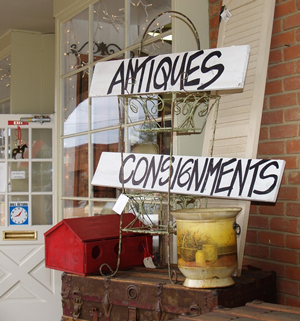A Guide to Being a Consignment Shopper
Long gone are the days when a person works at the same job for thirty years and retires there. These are the days of entrepreneurship, social platforms turned businesses and side hustles. We’re not looking to punch the clock anymore, we’re looking to build substantial, unending wealth for our children and the generations after them.  One of the quickest ways to make that kind of money is to create several streams of income concurrently, on and offline. Consignment shops happen to be a very viable option for that sort of extra cash. Don’t take our word for it. The experts agree. They’re the ones who own the consignment shops, after all. So, before you throw away that old designer bag in your closet, check this out.
One of the quickest ways to make that kind of money is to create several streams of income concurrently, on and offline. Consignment shops happen to be a very viable option for that sort of extra cash. Don’t take our word for it. The experts agree. They’re the ones who own the consignment shops, after all. So, before you throw away that old designer bag in your closet, check this out.
Do Your Research
It’s a common mistake to think that consignment shops take in any ole thing. That’s not possible because they can’t make worthwhile revenue that way. The majority of them will only accept brand-name items, rejecting your generic stuff right off the bat. They’re not trying to be snobby. As aforesaid, it’s about them making the most money during resale. That’s their goal, nothing personal.
It goes beyond just name brands and into greater specificity. Since no two consignment shops are alike, you have to do your research and find out what your location of choice permits. Just because one shop takes apparel from a major department store doesn’t mean the one down the street does.
In addition, the pros say the brands they sell often change depending on trends. If high-end designs are in, presently, that’s likely to switch up in a season or two when simpler styles become more popular again. Generally, you’ll be able to go to your favorite consignment shop’s website and search for a compilation of suitable designers; the ones they have decided to resell. If not, contact them by phone or drop by, but first, be sure they don’t operate by appointment because that could be inconvenient for obvious reasons.
What’s the Conditions?
Unlike thriftier outlets, consignment shops are not into the whole traditional hand-me-downs thing. They’re into newer clothes, footwear and accessories, two years and under, preferably. Whatever you want to sell must at least be in mint condition, of course. Do yourself a favor and donate or toss anything with holes, stains, unusual wear and tear, and wayward threads or seams. There is one exception: name-brand ripped jeans, for example, that were styled that way by the designer.
Furthermore, whenever possible, keep your items in their original packaging. Even if your boxes are slightly bent or plastic is somewhat torn, hang on to them. Include silica gel packets if applicable. All of this makes everything seem fresh and brand new. It oozes authenticity, especially if you have receipts, and it increases the value of whatever you’re selling.
Besides, customers wouldn’t have it any other way.
And Another Thing
Be patient. Consignment shops don’t typically give instant cash. They put your wares up for sale, and it could take up to three months or more to get a buyer. Adjustments can be made to the price, which will be listed below retail costs. But, when they pay, they pay. Talk about good, easy money.
CONSIGNMENT SEARCH
e.g. "Miami, FL" or "Miami FL" or "33168"
